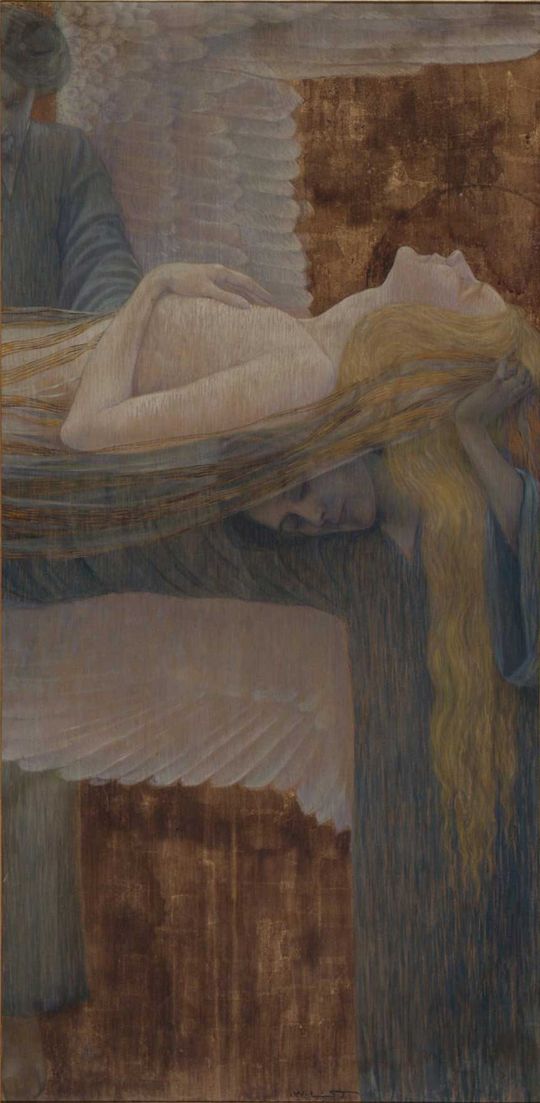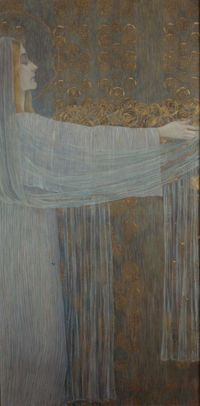The Transfiguration of St Elisabeth
circa 1905

Tempera enhanced with gold on canvas
96-7-1
Purchased at auction in London in 2005
H. 162 cm - L. 81 cm
List, who painted very little, was the closest follower and friend of Klimt in Vienna and one of the major members of the Secession movement. Both paintings are panels of a triptych on the theme of the legendary life of Saint Elisabeth of Hungary (1207-1231), very much in favour in Austria-Hungary. On the left, The Miracle of the Roses, on the right, The Transfiguration. In the centre was The Death of the saint, a full-length canvas (private collection). This set was broken up at an unknown date. By chance, the painting of The Transfiguration had retained its original frame, very much in the Secession style, and so it was possible to make a copy for the other panel.
The Transfiguration of St Elisabeth
circa 1905

Tempera enhanced with gold on canvas
96-7-1
Purchased at auction in London in 2005
H. 162 cm - L. 81 cm
List, who painted very little, was the closest follower and friend of Klimt in Vienna and one of the major members of the Secession movement. Both paintings are panels of a triptych on the theme of the legendary life of Saint Elisabeth of Hungary (1207-1231), very much in favour in Austria-Hungary. On the left, The Miracle of the Roses, on the right, The Transfiguration. In the centre was The Death of the saint, a full-length canvas (private collection). This set was broken up at an unknown date. By chance, the painting of The Transfiguration had retained its original frame, very much in the Secession style, and so it was possible to make a copy for the other panel.

